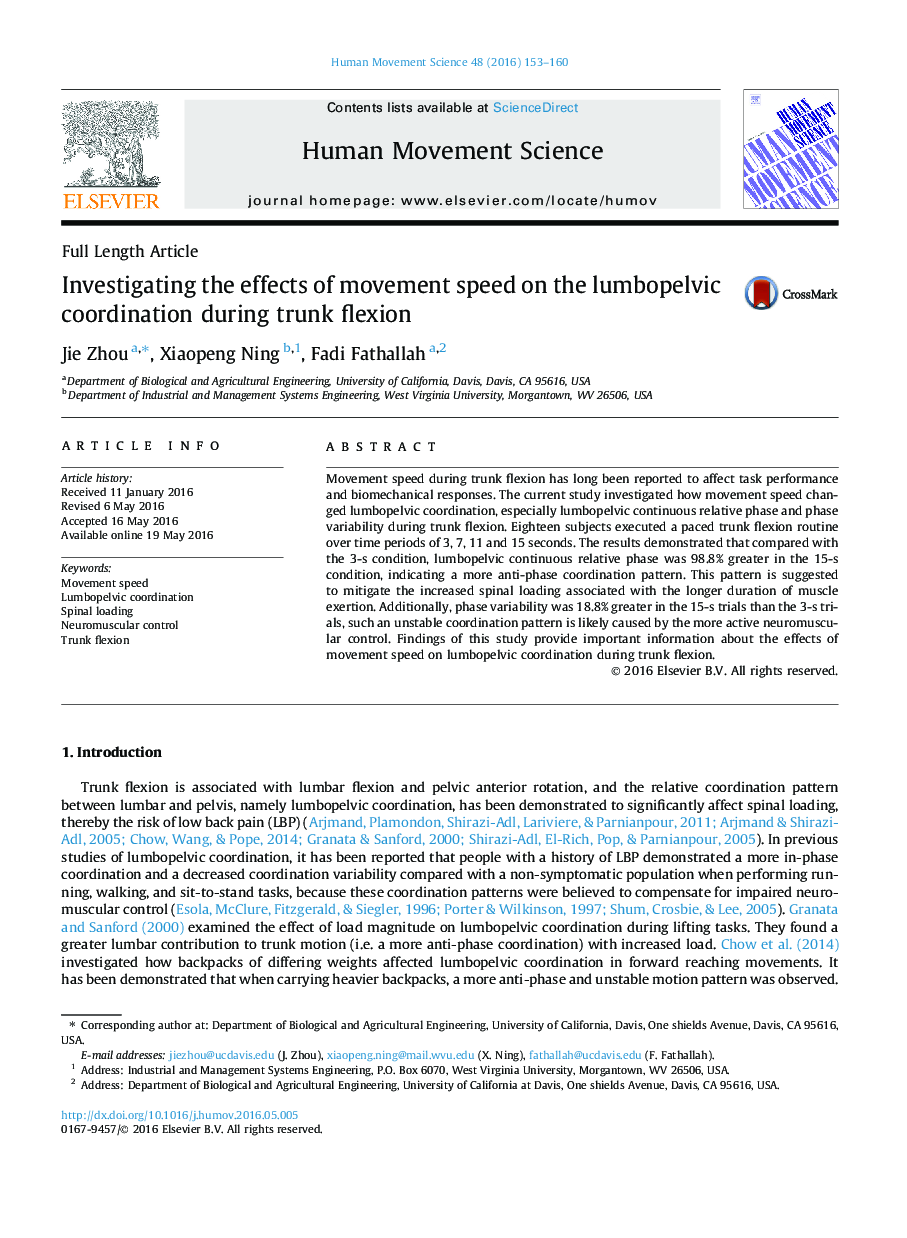| Article ID | Journal | Published Year | Pages | File Type |
|---|---|---|---|---|
| 928195 | Human Movement Science | 2016 | 8 Pages |
•Low speed trunk flexion has a more anti-phase lumbopelvic coordination.•Altered coordination indicates how healthy people adapt to change in spinal loading.•Low speed trunk flexion shows a more unstable coordination (greater variability).•Change in coordination variability derives from difference in neuromuscular control.
Movement speed during trunk flexion has long been reported to affect task performance and biomechanical responses. The current study investigated how movement speed changed lumbopelvic coordination, especially lumbopelvic continuous relative phase and phase variability during trunk flexion. Eighteen subjects executed a paced trunk flexion routine over time periods of 3, 7, 11 and 15 seconds. The results demonstrated that compared with the 3-s condition, lumbopelvic continuous relative phase was 98.8% greater in the 15-s condition, indicating a more anti-phase coordination pattern. This pattern is suggested to mitigate the increased spinal loading associated with the longer duration of muscle exertion. Additionally, phase variability was 18.8% greater in the 15-s trials than the 3-s trials, such an unstable coordination pattern is likely caused by the more active neuromuscular control. Findings of this study provide important information about the effects of movement speed on lumbopelvic coordination during trunk flexion.
